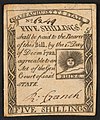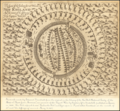Portal:New England
 From Wikipedia the free encyclopedia
From Wikipedia the free encyclopedia
The New England Portal New England is a region comprising six states in the Northeastern United States: Connecticut, Maine, Massachusetts, New Hampshire, Rhode Island, and Vermont. It is bordered by the state of New York to the west and by the Canadian provinces of New Brunswick to the northeast and Quebec to the north. The Gulf of Maine and Atlantic Ocean are to the east and southeast, and Long Island Sound is to the southwest. Boston is New England's largest city and the capital of Massachusetts. Greater Boston is the largest metropolitan area, with nearly a third of New England's population; this area includes Worcester, Massachusetts, the second-largest city in New England, Manchester, New Hampshire, the largest city in New Hampshire, and Providence, Rhode Island, the capital of and largest city in Rhode Island. In 1620, the Pilgrims established Plymouth Colony, the second successful settlement in British America after the Jamestown Settlement in Virginia, founded in 1607. Ten years later, Puritans established Massachusetts Bay Colony north of Plymouth Colony. Over the next 126 years, people in the region fought in four French and Indian Wars until the English colonists and their Iroquois allies defeated the French and their Algonquian allies. (Full article...) Selected article Adiantum viridimontanum, commonly known as Green Mountain maidenhair fern, is a rare fern found only in outcrops of serpentine rock in New England and Canada. The leaf blade is cut into finger-like segments, themselves once-divided, which are borne on the outer side of a curved, dark, glossy rachis (the central stalk of the leaf). These finger-like segments are not individual leaves, but parts of a single compound leaf. The "fingers" may be drooping or erect, depending on whether the individual fern grows in shade or sunlight. Spores are borne under false indusia (rolled flaps of tissue) at the edge of the subdivisions of the leaf, a characteristic unique to the genus Adiantum. Until 1991, A. viridimontanum was grouped with the western maidenhair fern, A. aleuticum, which grows both in western North America and as a disjunct on serpentine outcrops in eastern North America. At one time, A. aleuticum itself was classified as a variety (A. pedatum var. aleuticum) of the northern maidenhair fern, A. pedatum. However, after several years of study, botanist Cathy Paris recognized that A. aleuticum was a distinct species, and that some of the specimens that had been attributed to that taxon (group of organisms) were a third, hybrid species intermediate between A. pedatum and A. aleuticum. She named the new species A. viridimontanum for the site of its discovery in the Green Mountains in Vermont; it has since been located in Quebec and in one site on serpentine in coastal Maine. (Full article...) Selected biographyEdward Mitchell Bannister (November 2, 1828 – January 9, 1901) was a Canadian–American oil painter of the American Barbizon school. Born in Canada, he spent his adult life in New England in the United States. There, along with his wife Christiana Carteaux, he was a prominent member of African-American cultural and political communities, such as the Boston abolition movement. Bannister received national recognition after he won a first prize in painting at the 1876 Philadelphia Centennial Exhibition. He was also a founding member of the Providence Art Club and the Rhode Island School of Design. Bannister's style and predominantly pastoral subject matter reflected his admiration for the French artist Jean-François Millet and the French Barbizon school. A lifelong sailor, he also looked to the Rhode Island seaside for inspiration. Bannister continually experimented, and his artwork displays his Idealist philosophy and his control of color and atmosphere. He began his professional practice as a photographer and portraitist before developing his better-known landscape style. (Full article...) (Full article...) Selected pictureGeneral images -The following are images from various New England-related articles on Wikipedia. Did you know (auto-generated)
Related portalsMore did you know...
Selected State Maine Incorporated 1820 Co-ordinates 45.5°N 69°W Maine is both the northernmost and easternmost portion of New England. It is known for its scenery—its jagged, mostly rocky coastline, its low, rolling mountains, its heavily forested interior and picturesque waterways—as well as for its seafood cuisine, especially lobsters and clams. As Maine entered the 18th century, only a half dozen European settlements survived. Patriot and British forces contended for Maine's territory during the American Revolution and the War of 1812. Maine was part of the Commonwealth of Massachusetts until 1820, when it voted to secede from Massachusetts. On March 15, 1820, it was admitted to the Union as the 23rd state under the Missouri Compromise. Maine is the 39th most extensive and the 41st most populous of the 50 United States. (Full article...) WikiProjectsAssociated WikimediaThe following Wikimedia Foundation sister projects provide more on this subject:
Discover Wikipedia using portals |
















































































